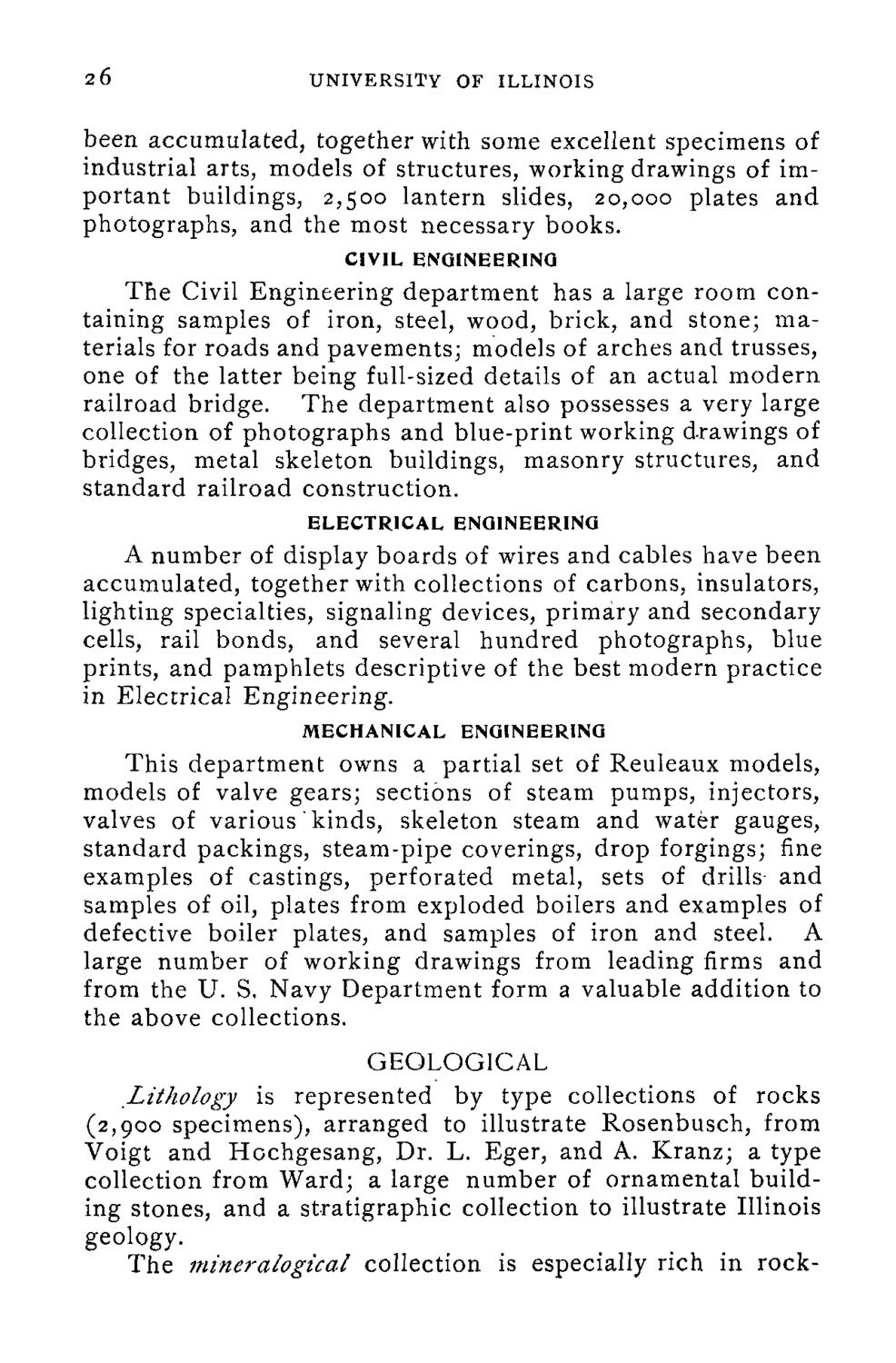| |
| |
Caption: Course Catalog - 1896-1897
This is a reduced-resolution page image for fast online browsing.

EXTRACTED TEXT FROM PAGE:
26 UNIVERSITY OF ILLINOIS been accumulated, together with some excellent specimens of industrial arts, models of structures, working drawings of important buildings, 2,500 lantern slides, 20,000 plates and photographs, and the most necessary books. CIVIL ErfGINEERINO The Civil Engineering department has a large room containing samples of iron, steel, wood, brick, and stone; materials for roads and pavements; models of arches and trusses, one of the latter being full-sized details of an actual modern railroad bridge. The department also possesses a very large collection of photographs and blue-print working drawings of bridges, metal skeleton buildings, masonry structures, and standard railroad construction. ELECTRICAL ENGINEERING A number of display boards of wires and cables have been accumulated, together with collections of carbons, insulators, lighting specialties, signaling devices, primary and secondary cells, rail bonds, and several hundred photographs, blue prints, and pamphlets descriptive of the best modern practice in Electrical Engineering. MECHANICAL ENGINEERING This department owns a partial set of Reuleaux models, models of valve gears; sections of steam pumps, injectors, valves of various kinds, skeleton steam and water gauges, standard packings, steam-pipe coverings, drop forgings; fine examples of castings, perforated metal, sets of drills and samples of oil, plates from exploded boilers and examples of defective boiler plates, and samples of iron and steel. A large number of working drawings from leading firms and from the U. S, Navy Department form a valuable addition to the above collections. GEOLOGICAL Lithology is represented by type collections of rocks (2,900 specimens), arranged to illustrate Rosenbusch, from Voigt and Hochgesang, Dr. L. Eger, and A. Kranz; a type collection from Ward; a large number of ornamental building stones, and a stratigraphic collection to illustrate Illinois geology. The mineralogical collection is especially rich in rock-
| |